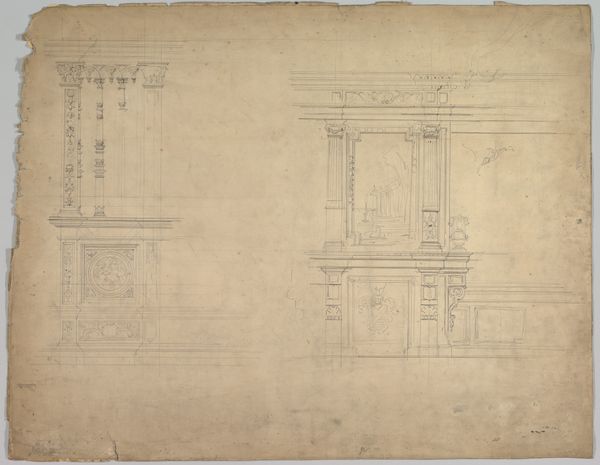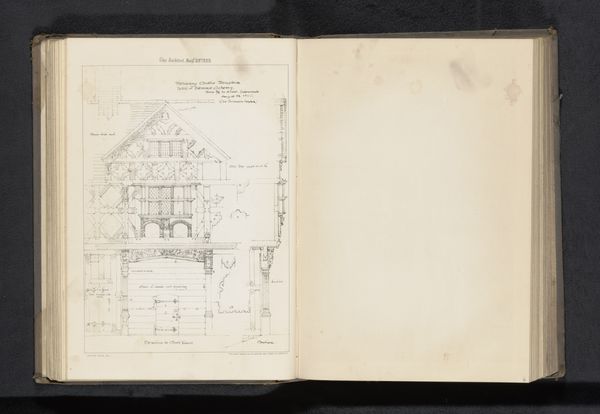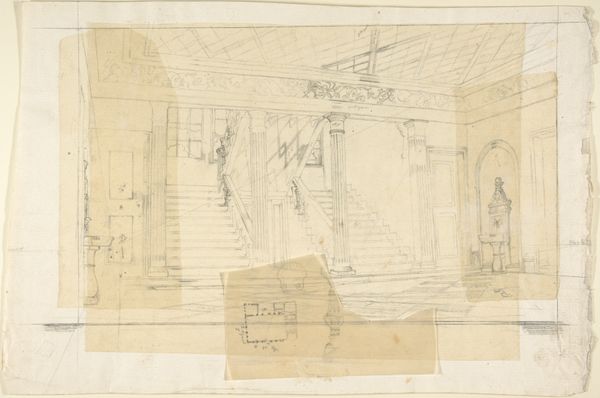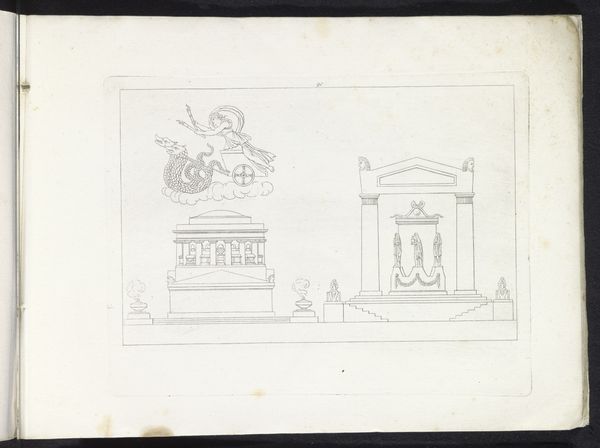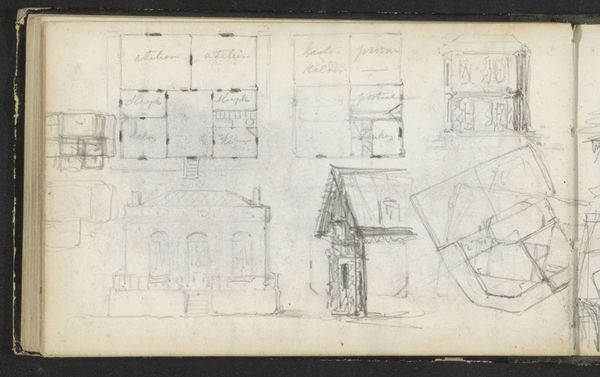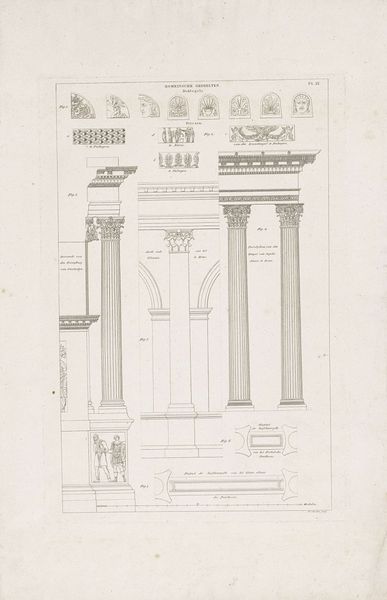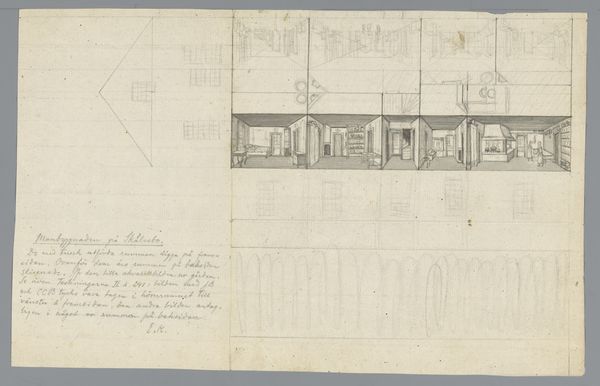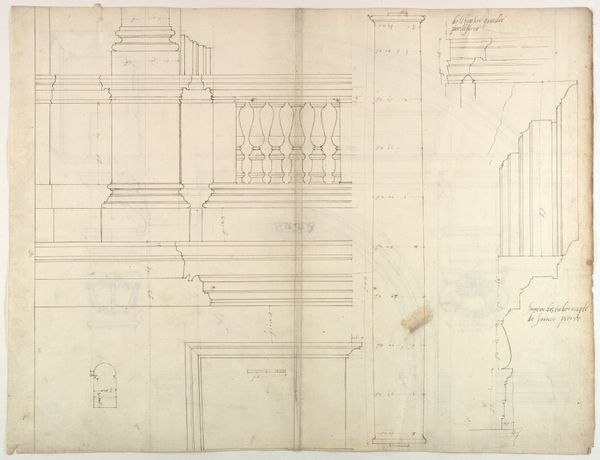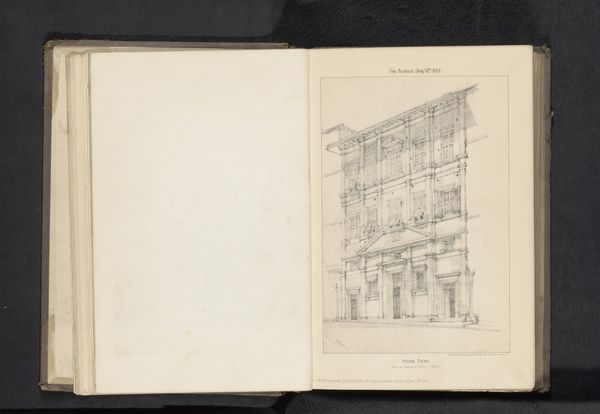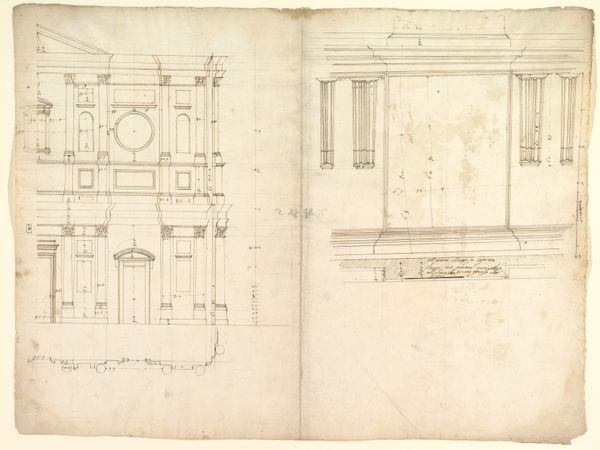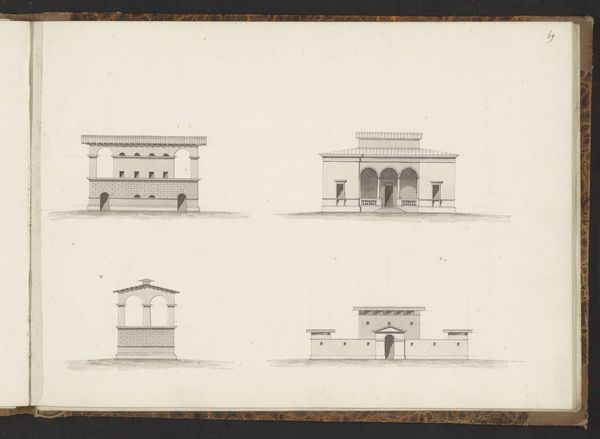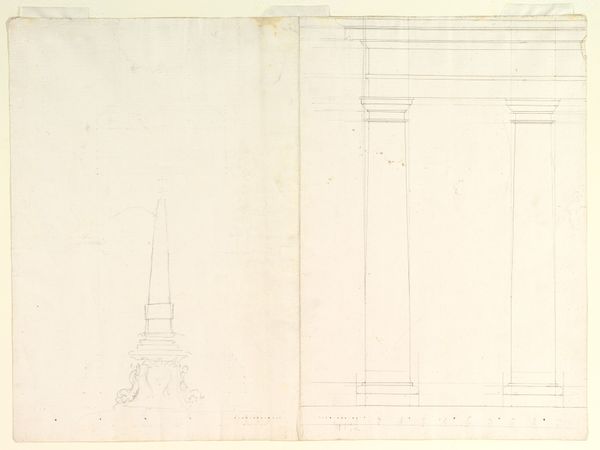
Reproductie van een tekening van het Palazzo Farnese te Rome door H.R. Ricardo before 1889
0:00
0:00
drawing, paper, pencil, architecture
#
drawing
#
aged paper
#
homemade paper
#
paper non-digital material
#
paperlike
#
sketch book
#
classical-realism
#
paper texture
#
paper
#
form
#
personal sketchbook
#
geometric
#
ancient-mediterranean
#
pencil
#
sketchbook drawing
#
sketchbook art
#
design on paper
#
architecture
Dimensions: height 262 mm, width 380 mm
Copyright: Rijks Museum: Open Domain
This is a reproduction of a drawing of the Palazzo Farnese in Rome, captured by H.R. Ricardo and reproduced by Sprague & Co. Here we see classical architectural details: the window with its arched pediment, and the ornate Corinthian capitals topping the columns. These are not mere decorations; they are deliberate invocations of ancient Greece and Rome, a reaching back to a supposed golden age of order and reason. Consider the Corinthian capital. Its acanthus leaves were first used to adorn the columns of temples, symbolizing prosperity and growth. Then, it resurfaced in Roman architecture, signifying imperial power. It reappears here, during the Renaissance revival of classical forms, yet it’s no longer about pagan gods or emperors. Now, it represents a humanistic ideal, a belief in the perfectibility of man through art and learning. This image is not simply a record of architectural details; it’s a testament to the cyclical nature of cultural memory, forever evolving as we project our desires and anxieties onto the symbols of the past.
Comments
No comments
Be the first to comment and join the conversation on the ultimate creative platform.
